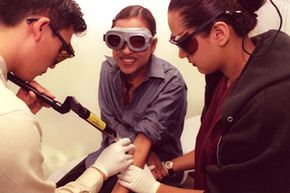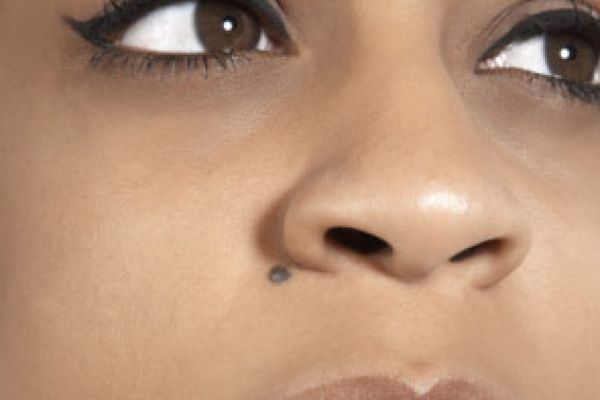Birthmarks have been called a sign of good luck -- or a mark of the devil. Sometimes they're cute. But they may also cause embarrassment when they appear on people's bodies or faces. Almost every human being has birthmarks, yet very few people understand exactly why these marks appear on our bodies or what they might say about our health.
You probably hardly give your birthmarks a second thought. They're usually painless, harmless and inconsequential, at least from a medical standpoint. Doctors rarely green-light any sort of treatment for birthmarks, primarily because the vast majority of birthmarks appear soon after you're born and then slowly fade as you age.
Advertisement
These marks vary greatly in size and shape. One person may have an almost unnoticeable pea-sized birthmark while another struggles with marks covering most of his or her face. The marks differ in color, too. Birthmarks might be blue, brown, black, pink, white, purplish or tan. Many marks are flush with the skin surface while others are puffy or raised. Specific subcategories of birthmarks appear only on certain parts of the body.
In the past, many cultures attached behavioral or supernatural attributes to birthmarks. There are as many myths and rumors about birthmarks as there are variations in the marks themselves. To this day, some societies view birthmarks as sign that a person is possessed by demons, or that the baby's mother somehow caused the mark during pregnancy.
Science does not fully explain the causes of birthmarks, but experts say your mom's behavior simply can't cause them. Doctors now classify birthmarks into predictable categories, most of which denote medically innocuous marks with no health consequences. However, in a few rare cases, you'll see that birthmarks may indicate potential underlying health problems, and that the marks themselves may cause grave problems, too. Sometimes those problems are entirely physical in nature, while other birthmarks that cause obvious scarring or blemishing may leave deep emotional wounds in children and adults. No matter what kind of birthmark you may have, that skin spot is a ubiquitous, visual reminder of your humanity -- one that you share in common with almost every other person on earth. Read on to see how birthmarks form, what treatments exist and how people around the world interpret these skin signs.
Advertisement





